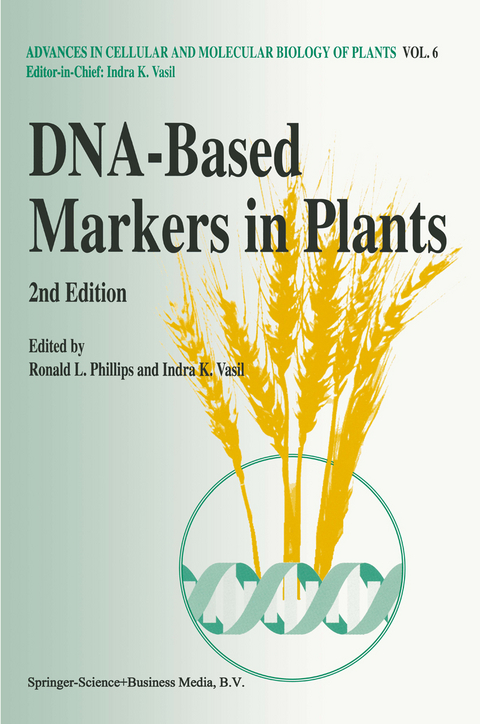
DNA-Based Markers in Plants
Springer (Verlag)
978-90-481-5672-6 (ISBN)
1. Some concepts and new methods for molecular mapping in plants*.- 2. PCR-based marker systems.- 3. Constructing a plant genetic linkage map with DNA markers.- 4. Use of DNA markers in introgression and isolation of genes associated with durable resistance to rice blast.- 5. Mapping quantitative trait loci*.- 6. Comparative mapping of plant chromosomes.- 7. Breeding multigenic traits.- 8. Information systems approaches to support discovery in agricultural genomics.- 9. Introduction: molecular marker maps of major crop species.- 10. Molecular marker analyses in alfalfa and related species.- 11. An integrated RFLP map of Arabidopsis thaliana*.- 12. An integrated map of the barley genome.- 13. DNA-based marker maps of Brassica.- 14. Molecular genetic map of cotton.- 15. Maize molecular maps: Markers, bins, and database.- 16. RFLP map of peanut.- 17. Phaseolus vulgaris — The common bean integration of RFLP and RAPD-based linkage maps.- 18. RFLP map of the potato.- 19. Rice molecular map.- 20. A framework genetic map of sorghum containing RFLP, SSR and morphological markers.- 21. RFLP map of soybean.- 22. Genetic mapping in sunflowers.- 23. The molecular map of tomato.- 24. Molecular-marker maps of the cultivated wheats and other Triticum species.- 25. Molecular marker linkage maps in diploid and hexaploid oat (Avena sp.).- 26. A compilation of molecular genetic maps of cultivated plants.- List of contributors.
| Reihe/Serie | Advances in Cellular and Molecular Biology of Plants ; 6 |
|---|---|
| Zusatzinfo | XII, 514 p. |
| Verlagsort | Dordrecht |
| Sprache | englisch |
| Maße | 155 x 235 mm |
| Themenwelt | Studium ► 2. Studienabschnitt (Klinik) ► Humangenetik |
| Naturwissenschaften ► Biologie ► Biochemie | |
| Naturwissenschaften ► Biologie ► Botanik | |
| Naturwissenschaften ► Biologie ► Zellbiologie | |
| ISBN-10 | 90-481-5672-6 / 9048156726 |
| ISBN-13 | 978-90-481-5672-6 / 9789048156726 |
| Zustand | Neuware |
| Informationen gemäß Produktsicherheitsverordnung (GPSR) | |
| Haben Sie eine Frage zum Produkt? |
aus dem Bereich


